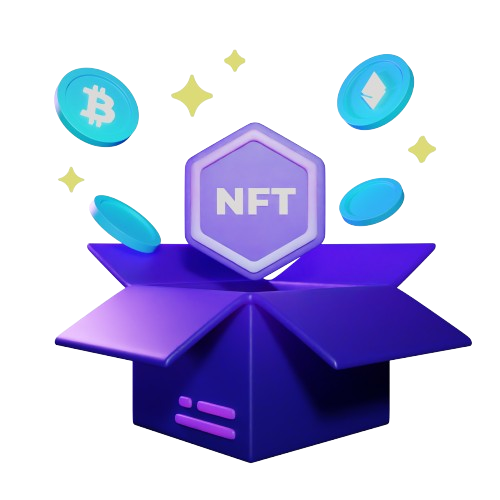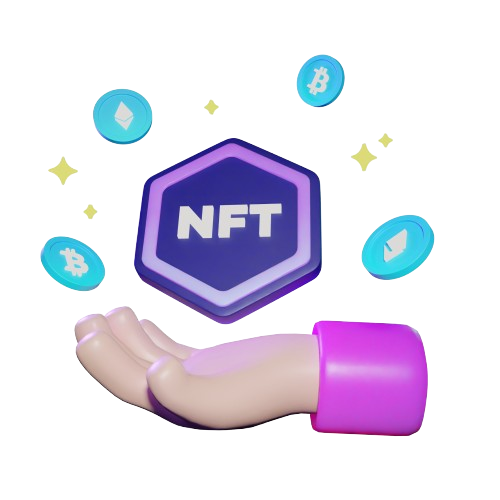
Digital assets have become a cornerstone of the modern financial ecosystem, reshaping industries and creating new avenues for innovation. Among these assets, tokens, and NFTs (non-fungible tokens) stand out as two distinct categories with unique characteristics and use cases. Understanding their differences is crucial for those delving into cryptocurrency, blockchain technology, or digital ownership.
Both tokens and NFTs rely on blockchain technology but serve entirely different purposes. While tokens act as a digital representation of value or utility, NFTs are unique digital items tied to a specific piece of data. This article explores these digital assets’ core differences, applications, and value propositions to help you make informed decisions.
Defining Tokens and NFTs
What are Tokens?
Tokens are digital representations of assets or value, often built on existing blockchain platforms. They serve various purposes, including facilitating transactions, granting access to specific services, or representing shares in a project. Tokens are typically fungible, meaning each one is identical to another of the same type. For example, a token used in a decentralized finance (DeFi) platform can be exchanged seamlessly with another token of the same value.
Tokens often adhere to established blockchain standards, such as Ethereum’s ERC-20, ensuring uniformity and interoperability. These digital assets are central to blockchain ecosystems, enabling users to interact with platforms securely and decentralized.
What Are NFTs?

NFTs, or non-fungible tokens, are unique digital assets that represent ownership of a specific item, whether digital or physical. Unlike tokens, NFTs are one-of-a-kind and cannot be exchanged on a like-for-like basis.
They are often used to tokenize digital art, virtual real estate, collectibles, and more. NFTs are built using blockchain standards like ERC-721 or ERC-1155, which allow them to store unique metadata. This metadata ensures the asset’s authenticity and distinguishes one NFT from another. The non-fungibility of NFTs makes them ideal for applications requiring individuality and proof of ownership.
Key Differences Between Tokens and NFTs
Fungibility
The primary distinction between tokens and NFTs lies in fungibility. Tokens are fungible, meaning they are interchangeable and hold the same value as other tokens of the same type. This fungibility allows tokens to be used as a medium of exchange or for staking within blockchain networks.
In contrast, NFTs are non-fungible. Each NFT is unique, carrying specific metadata that distinguishes it from others. This uniqueness makes NFTs unsuitable for use as a standard currency but perfect for applications where individuality is critical, such as art or gaming assets.
Blockchain Standards
Tokens generally follow blockchain standards like ERC-20, designed for creating uniform, interchangeable digital assets. These standards simplify the development and integration of tokens across platforms.
NFTs utilize standards such as ERC-721 or ERC-1155, which allow for the creation of assets with unique characteristics. These standards enable NFTs to store detailed metadata, making them suitable for representing complex or high-value items.
Smart Contracts
Smart contracts govern the functionality of both tokens and NFTs. For tokens, smart contracts primarily manage straightforward operations like transferring value or interacting with decentralized applications (dApps).
NFT smart contracts, however, are more intricate. They handle attributes such as ownership, uniqueness, and transaction history, ensuring that the asset remains identifiable and verifiable across its lifecycle.
Practical Applications
How Tokens Are Used
Tokens serve as the backbone of many blockchain platforms. In DeFi, they facilitate lending, borrowing, and liquidity provision. Governance tokens allow users to participate in decision-making processes within decentralized organizations. Additionally, tokens can act as utility assets, granting holders access to specific services or benefits within an ecosystem.
How NFTs Are Used
NFTs have gained prominence in industries like art, gaming, and real estate. Digital artists use NFTs to sell their work with proof of authenticity, while gamers acquire NFTs as in-game assets that can be traded or monetized. Virtual real estate platforms also use NFTs to represent ownership of digital land or property.
What Drives Their Value
Value of Tokens
Tokens derive value from their utility and the demand within their respective ecosystems. For instance, a token’s ability to grant access to a service, enable governance rights, or be staked for rewards plays a significant role in determining its value. Market factors such as adoption, innovation, and network usage also influence token valuation.
Value of NFTs
The value of NFTs hinges on their rarity, creator reputation, and cultural significance. An NFT representing a famous piece of digital art, for example, may command a high price due to its uniqueness and demand among collectors. The emotional or historical connection to an NFT can further enhance its perceived value.
Trading Mechanics and Marketplaces
Token Trading
Tokens are traded on cryptocurrency exchanges, where buyers and sellers determine their market value. These platforms ensure liquidity, enabling users to buy or sell tokens efficiently. The fungible nature of tokens means that their price remains consistent across different trading venues.
NFT Marketplaces

NFTs are bought and sold on specialized marketplaces. Unlike tokens, NFTs are often auctioned or sold at fixed prices based on their unique characteristics. The pricing of NFTs is highly subjective and influenced by factors like rarity, demand, and the reputation of the creator.
Some NFTs gain value over time due to cultural significance or historical importance.
Regulatory Considerations
Current Regulations
Tokens are subject to various regulations, often categorized as securities, commodities, or utility assets. Compliance with these regulations is crucial for projects issuing tokens to avoid legal complications.
NFTs, being relatively new, face emerging questions about intellectual property rights, tax implications, and legal ownership. As their adoption grows, regulatory frameworks are expected to evolve to address these concerns.
Future Implications
The increasing adoption of blockchain technology is likely to bring greater regulatory clarity for both tokens and NFTs. Clearer guidelines could foster trust and encourage wider participation while mitigating risks associated with fraud or misuse.
Investment Insights
Assessing Risks
Investing in tokens or NFTs requires careful consideration of risks such as market volatility, technological advancements, and regulatory changes. Conducting thorough research and understanding the underlying asset is essential for minimizing potential losses.
Strategic Use in Portfolios
Tokens offer opportunities for consistent returns through staking, yield farming, or long-term appreciation. NFTs, on the other hand, provide speculative opportunities and can act as unique assets that diversify a portfolio. Understanding the dynamics of both can help create a balanced investment strategy.
Looking Ahead
The blockchain sector continues to innovate, introducing new standards and capabilities for both tokens and NFTs. Advances in scalability, cross-chain compatibility, and user interfaces are expected to drive broader adoption.
Tokens and NFTs are poised to revolutionize industries beyond finance and gaming. From healthcare to education, their potential applications are vast, offering creators and users new ways to interact with digital assets.
Conclusion
Tokens and NFTs are integral to the blockchain ecosystem, each serving distinct purposes and audiences. While tokens enable seamless transactions and governance, NFTs offer unique opportunities for ownership and creativity. By understanding these differences, individuals and businesses can leverage digital assets more effectively, positioning themselves for success in this dynamic space.